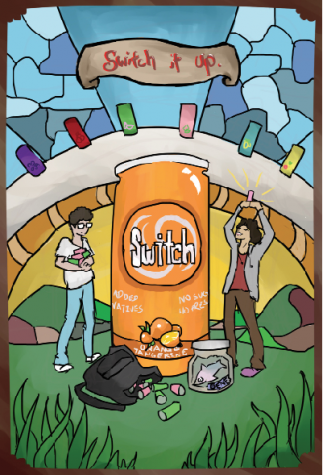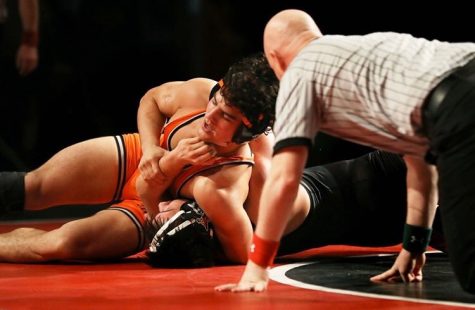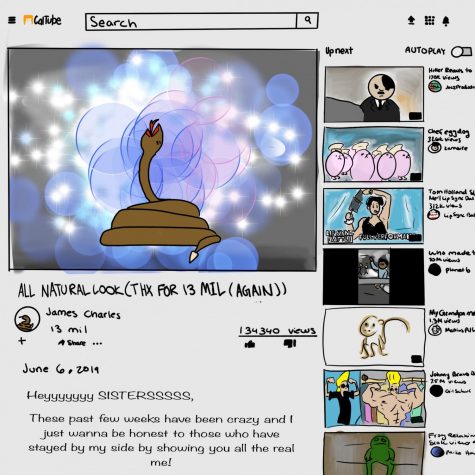Flag confiscation creates controversy
Is it within a student’s First Amendment rights to display a Confederate flag on a public school campus?
Controversy swirled about this subject last month when two senior boys, both of whom are not being named for fear of retaliation, drove onto the Cal High campus with Confederate flags mounted on their trucks.
The flags were displayed on the students’ vehicles in the back parking lot until lunch on Oct. 30, when Principal Sarah Wondolowski confiscated them, violating the students’ First Amendment rights of free speech and expression, according to Jim Ewert, an attorney for the California Newspaper Publishers Association.
Ewert said the removal of these flags was a clear violation of both the First Amendment and the California educational code.
“I think, under [these] circumstances, the students who brought the flags to the school, you know, their right to expression was violated,” said Ewert in a phone interview.
But Wondolowski said the reason for removing these flags was because the offensive message these flags convey was causing a significant disruption to the orderly operation of the school.
“It caused a disruption on campus,” said Wondolowski. “If there are any matters of speech that cause a disruption to the learning environment, then the school has a right to step in.”
When asked for specific examples of disruption, Wondolowski cited the multiple phone calls she received regarding students noticing the flags in the parking lot.
“If it’s something that might incite violence or hate or make someone feel physically threatened, then administration has absolutely right to remove it,” said Tasneem Khan, a government and history teacher.
School district spokeswoman Elizabeth Graswich supports Wondolowski’s decision to remove the flags and also firmly believes it was within the school’s right to do so.
The First Amendment states that the government, which includes public schools, cannot abridge an individual’s right to freedom of speech, which extends to all types of expression including that which is symbolic or literal.
Public school students are restricted in their freedom of speech on campus according to certain guidelines which are outlined in California State Education Code Section 48907.
According to this law, the only forms of restricted speech for students are if it is obscene, libelous or slanderous. Speech or expression also cannot disrupt the orderly operation of the school or incite imminent lawless or violent action.
Ewert, who is an expert in the field of students’ First Amendment rights, explained the importance of determining whether the speech in question disrupts the orderly operation of the school or will incite imminent violent action.
“Without [an] imminent threat of violence that is likely to occur, it is protected expression,” said Ewert. “As offensive as it might be…that’s the reason that the First Amendment exists. There is no need for a First Amendment protection of speech that is popular.”
The students who brought the flags on campus said they planned to drive to school on the same day with Confederate flags flying from their trucks. They were upset when the flags were confiscated.
After learning about his flag being confiscated, one of the boys went to retrieve his flag from assistant principal Bob Spain, who took the flag from Wondolowski’s office and returned it.
One confiscated flag was just a regular Confederate flag, while the other also displayed a skeleton holding a knife covered in blood with text that read, “The South Will Rise Again.”
“I just went in to the office and asked for it back, and then they just told me I couldn’t do it again,” one of the boys said.
The other boy never confronted administrators about the confiscation of his flag.
Seeing as how the Confederacy used this flag in the Civil War when they were fighting for the right to keep slavery, it is commonly accepted that these flags represent racism.
The students who brought these flags on campus disagree with this perspective, stating that they are simply a symbol of Southern pride.
“Well, I’m from Texas,” said the one boy who retrieved his flag. “[I just want to] show that I’m proud of where I came from.”
Neither boy believes that a Confederate flag is a symbol of racism.
In regard to the First Amendment, some students agree that a student should have the right to display such a flag on campus.
“Who am I to demean what [the boys want] to do with [their] piece of property?” said senior Thomas Brehm. “If it’s [their] property, why not? The school shouldn’t have taken what’s [theirs].”
Other students disagree because they believe it’s within the school’s right to remove this offensive symbol.
“I feel like that flag shouldn’t be displayed because it’s offensive to certain people, and [they] were doing it for attention,” said senior Allison Morris.
As for the students involved, there is no question in their minds that their rights were violated.
“I passed cops flying the flag, and they didn’t pull me over,” said one of the boys. “If that law doesn’t mind, then why should this law, or authority, mind as well?”
Managing editor Erin Fox contributed to this story.









